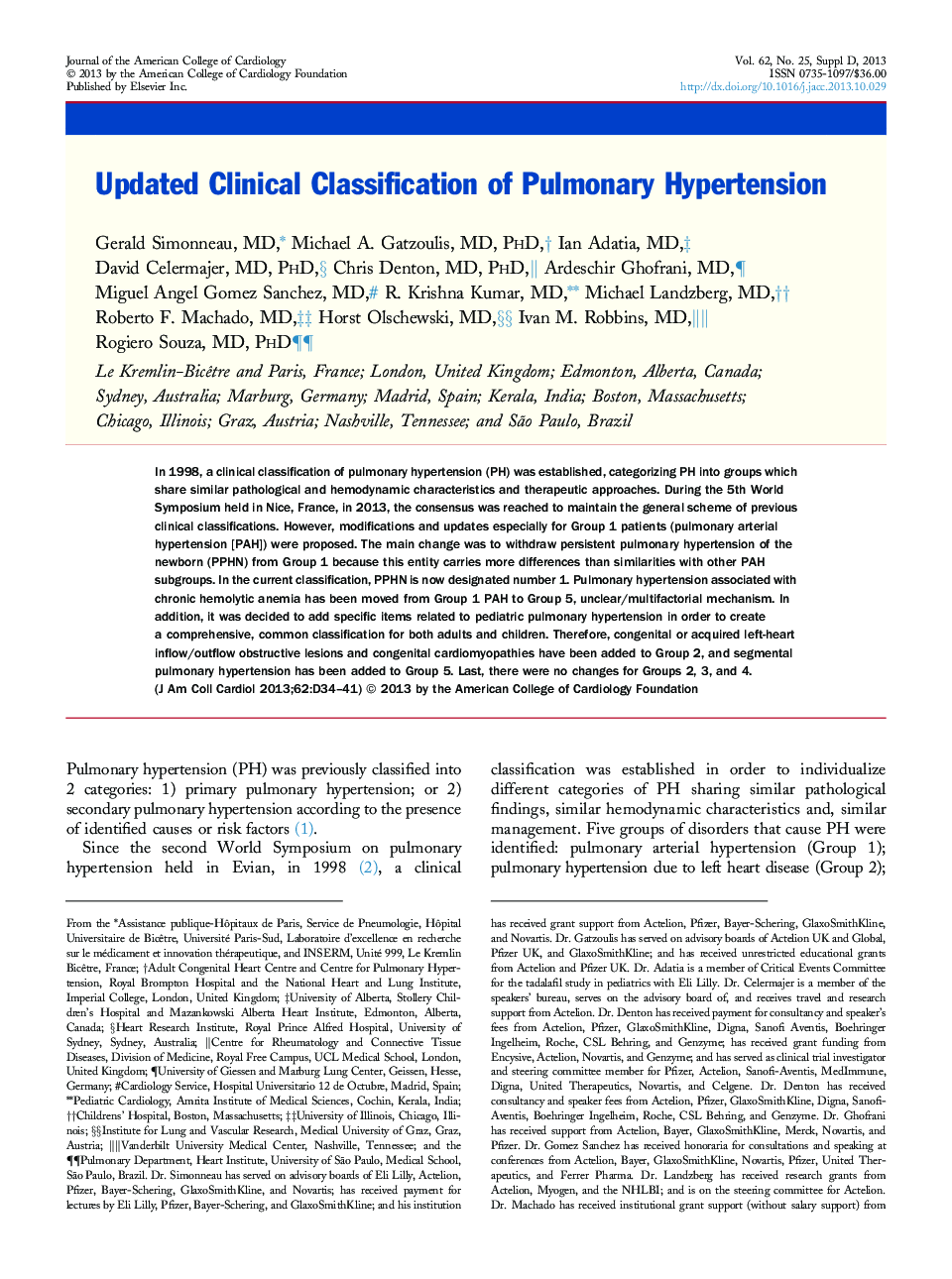| کد مقاله | کد نشریه | سال انتشار | مقاله انگلیسی | نسخه تمام متن |
|---|---|---|---|---|
| 2945207 | 1577125 | 2013 | 8 صفحه PDF | دانلود رایگان |

In 1998, a clinical classification of pulmonary hypertension (PH) was established, categorizing PH into groups which share similar pathological and hemodynamic characteristics and therapeutic approaches. During the 5th World Symposium held in Nice, France, in 2013, the consensus was reached to maintain the general scheme of previous clinical classifications. However, modifications and updates especially for Group 1 patients (pulmonary arterial hypertension [PAH]) were proposed. The main change was to withdraw persistent pulmonary hypertension of the newborn (PPHN) from Group 1 because this entity carries more differences than similarities with other PAH subgroups. In the current classification, PPHN is now designated number 1. Pulmonary hypertension associated with chronic hemolytic anemia has been moved from Group 1 PAH to Group 5, unclear/multifactorial mechanism. In addition, it was decided to add specific items related to pediatric pulmonary hypertension in order to create a comprehensive, common classification for both adults and children. Therefore, congenital or acquired left-heart inflow/outflow obstructive lesions and congenital cardiomyopathies have been added to Group 2, and segmental pulmonary hypertension has been added to Group 5. Last, there were no changes for Groups 2, 3, and 4.
Journal: Journal of the American College of Cardiology - Volume 62, Issue 25, Supplement, 24 December 2013, Pages D34–D41